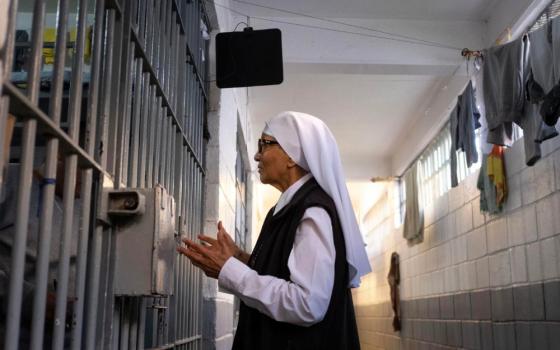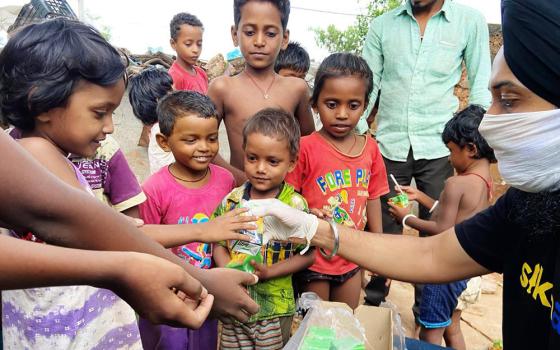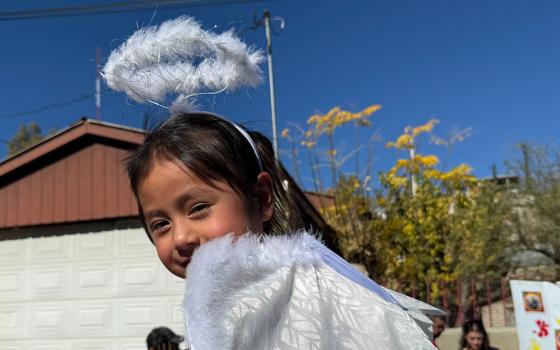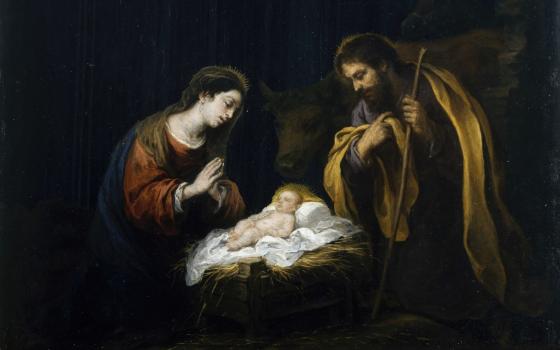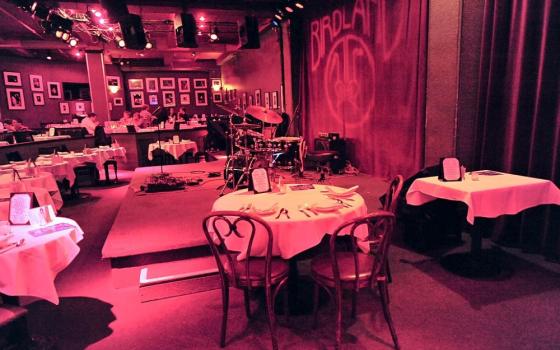
Sr. Venus Marie S. Pegar, a vocation director of the Sisters of Saint Francis Xavier (SFX) Philippine mission, shares a research study she co-authored with two lay professionals exploring how the elderly benefit from painting. (Oliver Samson)
Sr. Venus Marie S. Pegar, a vocation director of the Sisters of Saint Francis Xavier (SFX) Philippines mission, recently completed a research study she co-authored with two lay professionals exploring how the elderly benefit from painting.
Pegar has been working toward her Bachelor of Science in Social Work at the Asian Social Institute in Manila since 2023 to help her congregation fulfill a government requirement for homes for the aged to have social workers.
Her research revolves around the elderly in shelters. She and her co-authors spent time at the Mary Mother of Mercy Home for the Elderly and Abandoned, which is run by her congregation in San Pedro, Laguna.
Pegar spent time observing the residents at the shelter as they sat in front of an easel, dipped a brush in the paint and swept it over a canvas. They told her how they were surprised at themselves after managing to finish a painting.

A photo of a painting one of the shelter's residents made. Sr. Venus Marie S. Pegar said that through painting, they are able to reconnect with their past, live in the present and anticipate the future. (Oliver Samson)
Pegar told Global Sisters Report that some of those paintings have been exhibited at a medical convention for the San Pedro City Medical Society and later sold. She recently spoke to GSR about her research, her calling as a painter, and her ministry with the elderly.
GSR: What inspired you to do this study?
Pegar: This research is related to our lolas (grandmothers) who paint as a hobby. I invited my colleagues to do the study in our shelter. I prepared three canvases for three sessions. The paintings for the sessions reflected their lives before they entered the shelter, when they were already at the shelter and their thoughts about the future. I noticed the lolas felt their worth and did not feel totally abandoned.
How did the study unfold?
It's about the social functioning of the lolas, and looking at improving them as pakikipagkapwa tao (socializing people). During the painting sessions, they shared among themselves about five boxes of paint. Some of them were possessive about the things that belonged to them, but this helped them see that everyone in the community is part of their lives.
The lolas were amazed to discover that blending colors results in a new color, and the bright side of their lives showed through. Some visitors brought easels for them, and each had their own easel.
Painting inspires them to look forward to the future. Sometimes, they ask when they will paint again.
What did you learn?
That hope is in everyone, regardless of age — even people in a shelter who have been abandoned. Even the families who abandoned them did not know about their ability to paint, and some now appreciate their art.
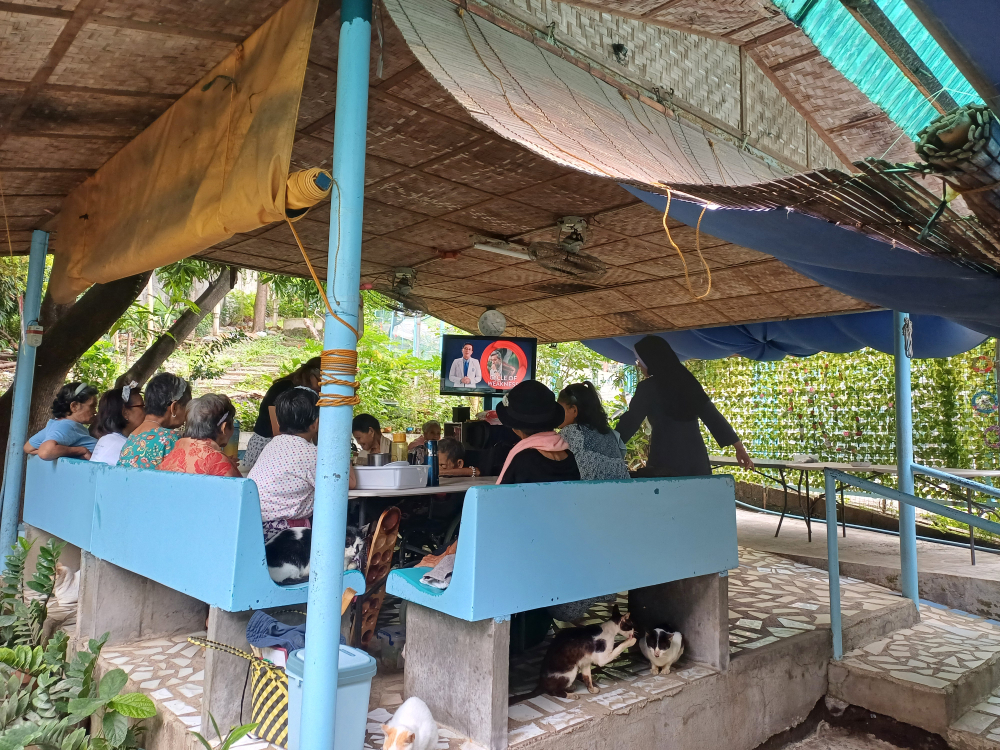
Residents of the Mary Mother of Mercy Home for the Elderly and Abandoned watch television in their kiosk in San Pedro, Laguna. (Oliver Samson)
Our eldest resident is 93. She painted her mother's sunflower, which she has taken care of since she was young. Another resident painted two coffins, one representing the world that abandoned her, and the other representing when she leaves the shelter after her death.
When I visit other shelters run by sisters, I encourage them to do art therapy for their residents because I have seen the benefits of the arts on the elderly in our shelter. I also offer to conduct art therapy for their residents when I have the time.
I learned that you can inspire people in a shelter to do what they did not even think they could do, like painting. And when they find out they can paint, they appreciate what they are doing. Through painting, they reconnect with their past, live in the present and anticipate the future.
How is art connected to your religious life?
I always say that I'm a sister before an artist. When I joined the congregation, I did not come in as an artist. But the arts are inherently tied to creation. Art is a means to express gratitude for the beautiful world God has created. It makes our elderly residents appreciate their gifts and the present.
For me, art is a form of meditation, especially when I'm painting an abstract piece. I just hope that through the colors I paint, people, especially those who are going through challenges, will see that there is always a bright side to life. I express God's love through paintings to inspire hope.
Who inspired you to paint?
I am very thankful to my father for supporting and encouraging me to paint when I was in the first grade. I remember that I was painting a gumamela (hibiscus plant), and he taught me to add light to the front and shade to the back. I cannot forget that. He was the one who built my confidence in painting.
Advertisement
We had a bakery at that time. When he went to the city to buy flour and sugar, he stopped by art shops and brought home painting materials and ideas. He was my number one fan.
Even though he is gone, he still inspires me. Even when I drive, I am not scared because I know my father is there. Everything I do today has some connection with my father.
How many years have you ministered to the elderly? What is it like?
I have been doing this since 2007. Our shelter has a connection to me as a person. I grew up with my own three lolas. And when I became a nun, the congregation assigned me to the lolas in our shelter. I fixed their hair and put makeup on them because those were the things I did for my own lolas, and my lolas did those things for me.
Usually, sisters are transferred to another mission every three to six years. But I am still with the lolas because I am the first Filipina in our congregation, and the sisters from Myanmar who minister to the lolas need assistance in communicating with them.
Each time a lola arrives in our community, I always tell her that this is her new family. They know they have been abandoned, and we discourage visitors from asking personal questions because it will bring back their painful past.
Sometimes, the ones who have been in the community for a long time bully the new ones. So, I remind them to treat everyone as a family member and accept each other.
During leisure time, they watch television. They also do Zumba in the morning and pray the Divine Mercy and the rosary daily in the afternoon. They like to play sungka (the Filipino version of the mancala game). We have a lola who is an expert because she plays sungka alone even before sunrise. Before daybreak, you can hear the shells drop into the pockets of the sungkaan. She beats everyone, and it keeps her life going.
At times, I drive them around the city so they can see the outside world. They are excited about going for a ride around and seeing places.

